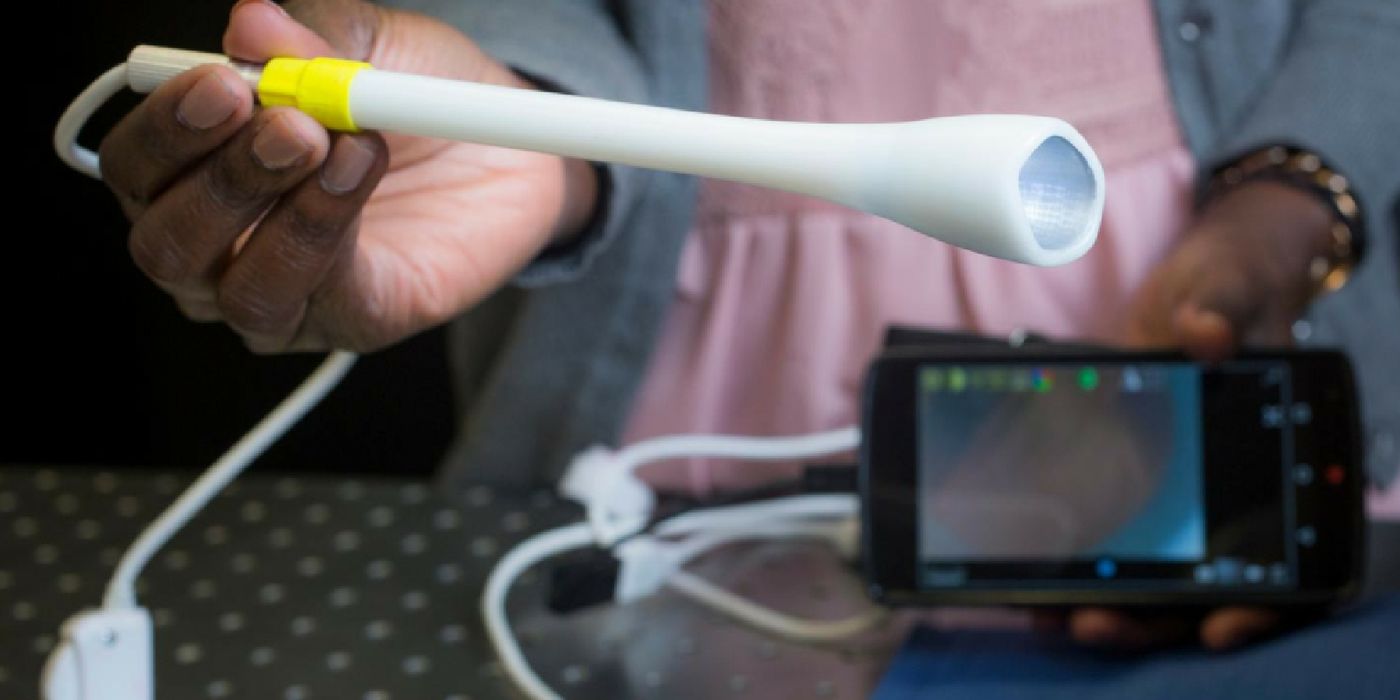Finally, an Easier Way to Screen for Cervical Cancer
Could a new device spell the end of painful gynecological exams for women proactive about their cervical cancer screening? Indeed, researchers from Duke University say a newly developed handheld device will be a drastic improvement over the torture of traditional speculums.
"The mortality rate of cervical cancer should absolutely be zero percent because we have all the tools to see and treat it," said Nimmi Ramanujam, the Robert W. Carr, Jr., Professor of Biomedical Engineering at Duke, and the study’s senior investigator. "But it isn't. That is in part because women do not receive screening or do not follow up on a positive screening to have colposcopy performed at a referral clinic.”
Currently, screening for cervical cancer first takes place with Pap tests, which are recommended every 3 years for women between 21 and 65 years old. The test takes a swab of the cervical tissue to look for cancer cells. Women who have an abnormal Pap results then undergo a colposcopy, a procedure that allows doctors to closely examine the cervix, vagina, and vulva for signs of cancer.
Although Pap smear can be done by non-specialists with little reliance on special equipment, a colposcopy is different. The latter procedure requires a colposcope, an unwieldy and expensive telescopic device that has to be operated by trained professionals.
The new screening device would perform the same functions as a traditional colposcope, except that all the functions are compacted into a handheld wand. Dubbed the “pocket colposcope,” the device is about the size of a large tampon and has a camera at one end. The wand connects to other devices, such as laptops and smartphones.
The portability of this wand could eliminate the need for expensive equipment and specialization. Women could, in theory, could capture images of their cervix by themselves, essentially performing the first steps of a cervical cancer screening on their own. Then, physicians are able to step in and help patients interpret the results.
"We recruited 15 volunteers on Duke's campus to try out the new integrated speculum-colposcope design," said Mercy Asiedu, the study’s lead author. "Nearly everyone said they preferred it to a traditional speculum and more than 80 percent of the women who tried the device were able to get a good image. Those that couldn't felt that they just needed some practice."
Importantly, the researchers see the device as a way to transform cervical cancer screening in low-income areas. “We need to bring colposcopy to women so that we can reduce this complicated string of actions into a single touch point,” said Ramanujam.
"There have been a few other attempts to come up with a better solution, but none of them have succeeded," said Asiedu. "One design using an inflatable cylinder proved just as uncomfortable as a traditional speculum. Another using directed airflow is just as bulky and expensive as a modern colposcope. With our handheld, low-cost design, we're hoping to redefine the entire procedure."
Additional sources: Duke University via EurekAlert!









